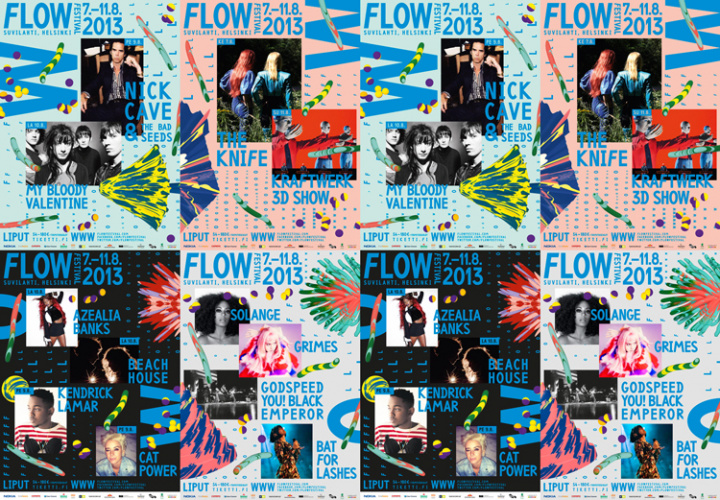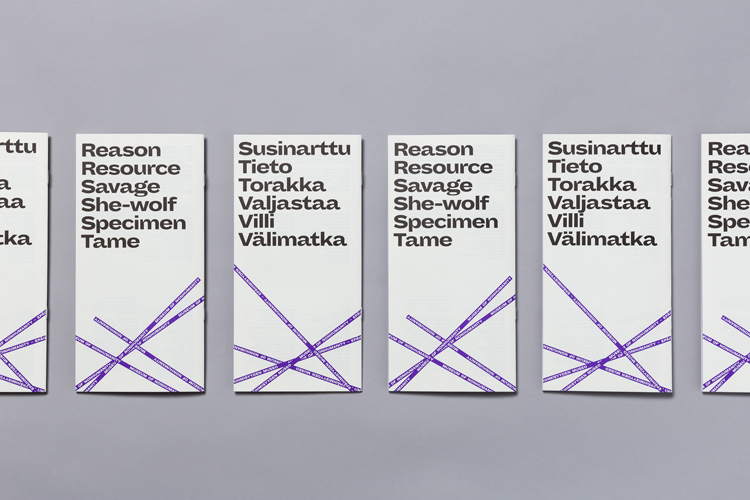“Design is a tool for national production, not a cultural pastime”: a Finland design guide
As part of our series profiling country’s design industries, we look at Finland’s well-established design scene, and hear from the designers trying to find a new design language.
In May, Helsinki hosted a virtual gig by creating a digital twin of itself. Finland’s capital was accessed by over 700,000 people (12% of the country’s population) through the immersive simulation. While attendance was no doubted boosted by lockdown boredom, the project has been in development for over two years. The most streamed band in Finland, JVG, performed to a virtual audience. The gig was a tie-in with the city’s status as Capital of Smart Tourism, and showed how the country is innovating at a time of crisis – this time through technology design (created by Finnish VR studio Zoan).
It should not come as much of a surprise. Finland, which only became an independent country from Russia in 1917, has long placed design at the forefront of its national identity. A 2017 report showed that the turnover for the Finnish design sector was a staggering £2.91bn, though this figure does cover a wide breadth, from construction to digital design such as computer games and software.
What makes the design scene so strong?

Design Forum Finland was set up in 1875, when the country was still part of the Russian Empire. Originally called the Finnish Society of Crafts and Design, it helped to set up a craft school (which would become the University of Industrial Arts and is now part of Aalto University) as well as curate pieces of design that are now kept in the country’s Design Museum.
Since World War II, design played a key part in building the country’s industries and reconstruction. Anne Veinola, a spokesperson from the forum tells Design Week that: “Design had its say much in matters of the country’s image but also as a competitive tool for the industry”. As well as educational intuitions, design was pushed onto the international stage, with participation in the Milan Triennials for example. “The media did the rest and Finnish Design as a concept and Finland as a design nation were born.”
Despite the conceptual role design might have played in building a national identity – which current designers now take pride in and challenge – Finns are a “practical people” who like “when things and life are smooth and functioning”. Design, Veinola says, has a “huge impact on this” as products have flourished that make life easier. She cites tableware, public services, as well as interior products like faucets and door handles. “Well-designed every day is also democratic, smart and climate- and resource-wide, inclusive, and as such suits perfectly the Scandinavian ideals of a society,” she adds.
Room for “systemic change”
The link between design and industry is supported throughout society. Veinola says that throughout the country’s history, “design was rather seen as a tool for enhancing the national production and less as a cultural of arty pastime”. To keep design relevant, the forum picks a theme for each year, and runs exhibitions and workshops according to them. In 2018 this was ‘New design’ and last year’s was ‘Value and meaning’; both these circle ideas about sustainability. One of the main focuses is the circular economy, and it works with industry groups such as Business Finland, a Finnish innovation fund Sitra as well as the government to work on their circular economy programmes.
Working closely with industry in this way clearly allows for a greater potential to adopt changes, but Veinola says that there’s still “so much to do”. “Most companies only think of recycling waste and refining processes to be more environmental, not upcycling or making great systemic changes in their operations,” she says.
“Systemic change” might seem daunting given the ongoing pandemic (though Finland’s death toll from the disease is a relatively low 314). COVID-19 has refocused the forum more than “ever before”. In the next year, it will aid businesses with strategies and in particular with adapting to “digital surroundings” (perhaps like virtual, nationwide gigs).
“Trans-disciplinary education”

The most prominent meeting point for the design scene is Aalto University, founded in 2010 as various schools merged into one. Helsinki School of Economics, Helsinki University of Technology and the University of Art and Design Helsinki formed the school, which is named after the country’s iconic designer and architect Alvar Aalto.
Associate professor of industrial design at Aalto’s department of design, Severi Uusitalo tells Design Week that what makes the “specific strength” of the design education is that it is a “multi-disciplinary” experience. He calls it “trans-disciplinary”. There are seven different schools – arts, design, business, engineering and science – and students can move across these for a varied educational experience.
The move from a “siloed” education has created a more diverse campus, he says, where students and professors from different departments can have “ad hoc meetings”. He also points to the research-led design as a strength (among this field is a focus on co-design and sustainable practices). His focus is industrial design, and he’s currently working on an Accessible Magnetic Resonance Imaging project. But the scope at the university is wide: he also highlights the work of Kirsi Niinimaki who is working on sustainable fashion and textile development.
Uusitalo says that throughout the education system, students are encouraged to think about their contribution to society, and how their design might play a part of it. He points out that there is a specific interest in social design, and especially when it has an environmental focus. One the of things that makes Finnish society conducive to this kind of thinking is its “egalitarian” and “liberal” values. “That should of course provide an opportunity for people to explore and be themselves,” Uusitalo says.
“Finland has not had a very rich history of independent graphic design studios”

While Veinola and Uusitalo talk of typical Finnish design, the country’s designers also appear to be testing the boundaries. Despite its strong reputation as a design capital, there are sectors where it has not always flourished – and this has allowed for these specialties to find their “voice” in recent years. Tsto, a graphic design studio in Helsinki, eschews any idea of classic Finnish style. Its founder, Matti Kunttu tells Design Week that this was deliberate.
“Finland has not had a very rich history of independent graphic design studios, which has also enabled us to discover our own language and voice,” he says. “There was no one to tell us how to do things ‘right’.” The studio’s outlook is very much international, as Kunttu says it “feels irrelevant to talk about Finnish design as such in a world where ideas and aesthetics don’t take national borders into consideration”.

Describing Helsinki as a “small village”, Kunttu says that the capital’s creative collaboration fosters a good working environment, particularly with its exhibitions and events. And a lot of the studio’s work is for these festivals and installations. For example, the studio’s work on the Museum of Nonhumanity – a temporary museum which sought to explore imaginary boundaries between humans and other animals – which was a typographic identity with strike-throughs and a slash of purple running through it.
Tsto’s style is loud and almost punk. Kunttu says the studio is inspired by Japanese graphic design, though “probably because most of it seems so incomprehensible to us”. The “aesthetics are so pleasing”, he says – a distinct departure from stereotypical ideas of “modernist mid-century ideas using natural materials”.
The creativity Kunttu talks about is reflected in a slew of design studios in Helsinki, like Werklig which designed the pink and orange brand identity for the city of Helsinki itself. Kokoro & Moi, another graphic design studio, which works with international clients like McDonalds and Muji. The studios’ varied work – and diverse client base – demonstrates that while the country has strong creative foundations, there’s no uniform fit for Finnish design.







When was design simply considered as “a cultural pastime”?